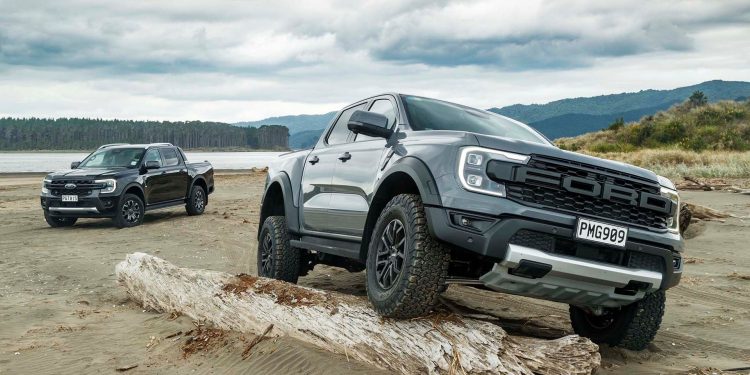2023 Ford Ranger Raptor vs Ford Ranger Wildtrak comparison review
Words: Kyle Cassidy | Photos: Tom Gasnier
Ford’s Ranger, just renewed, has maintained its spot as the best seller locally, despite a general softening of ute sales. For those shopping at the top of the range, which is better, Wildtrak or the simply wild Raptor?
With the arrival of a new Ford Ranger comes the decision of just which model to buy. There are plenty of options, from the workhorse XL to the newly introduced Platinum, which offers a level of pomp not yet seen on a ute in this market.
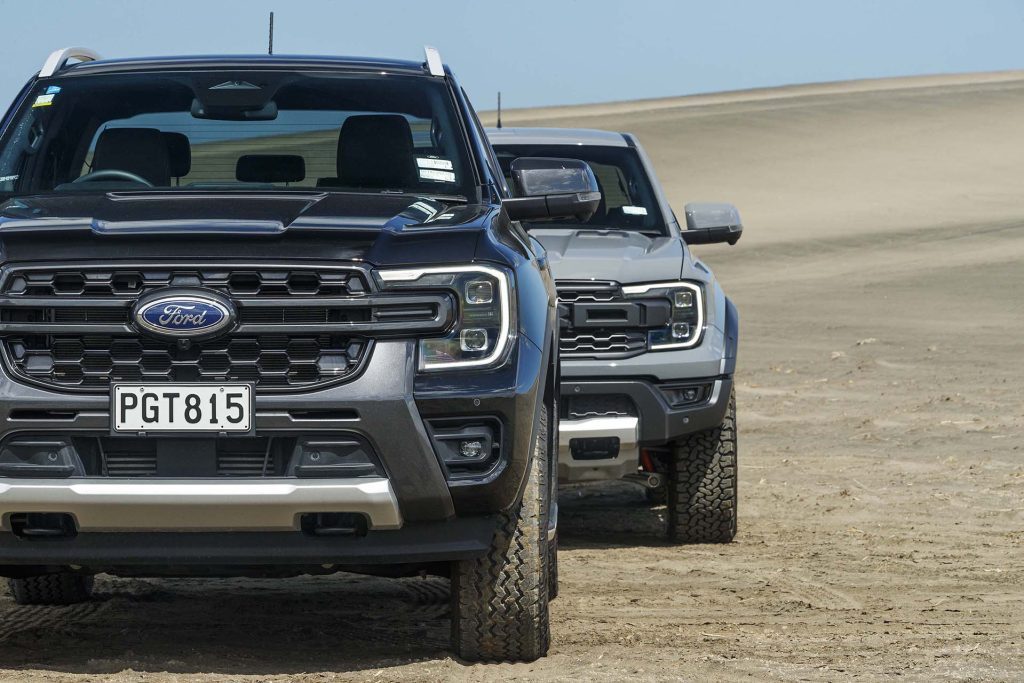
While we reckon the Ranger XLT is plenty good enough, fit for any requirement, those who demand more will be weighing up between the top rigs; the Wildtrak or the Raptor. Roughly speaking, Ford sells two Wildtrak V6s for every Raptor, though the WT had a head start on the performance model, which launched a couple of months after it. However, it has caught up quickly, and is now the model with the longest wait list. So which one will suit you better?
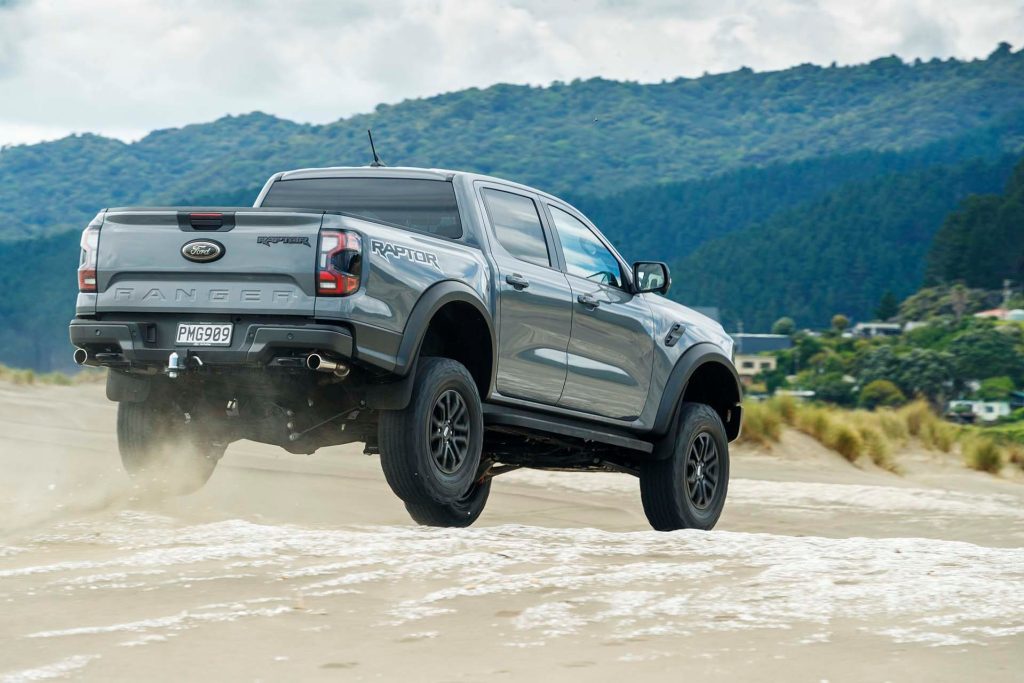
How do the specs of the Wiltrak compare to the Raptor?
The Wildtrak lands with a 3.0-litre V6 turbodiesel under its new, wider bonnet, giving previous owners what they wanted most of all, more power and torque. On that, there is 184kW and 600Nm and, paired with a ten-speed auto, it’s more efficient than the old 3.2-litre five. Still, with figures of 254g/km (9.6L/100km) it’s up for $3910 in CO2 fees. It’s also $2000 more expensive than when we first drove it just a few months ago, Ford now asking $82,490. Talk about inflationary pressures.
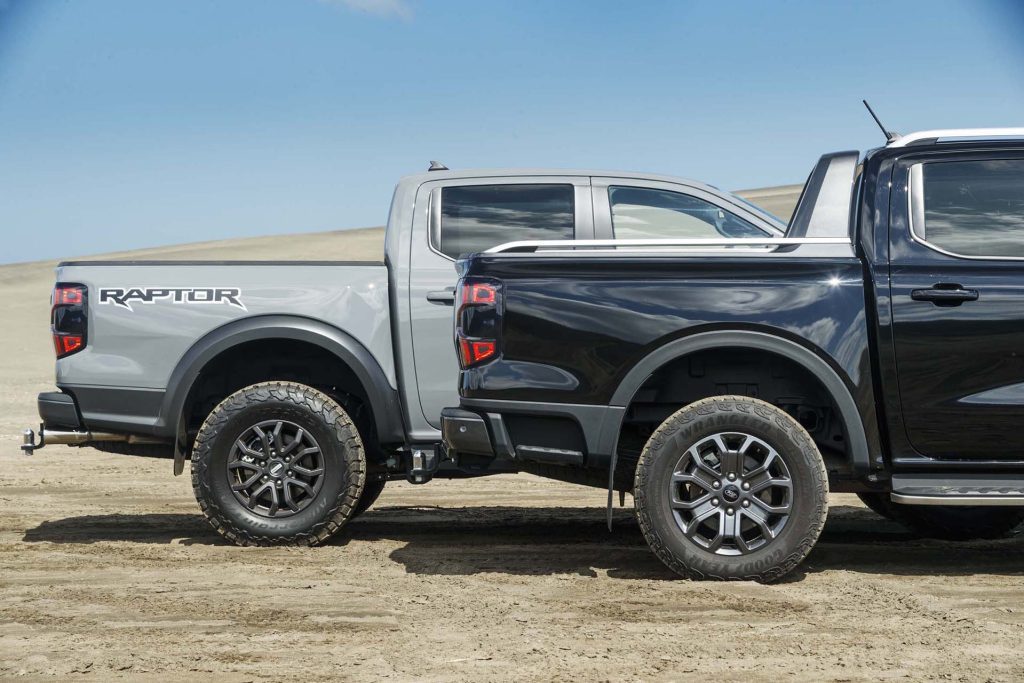
If you’re less fussed on all the torque, there’s the option of a 2.0-litre bi-turbo four with 157kW/500Nm, which costs $75,990 (up $500 since launch) but the fee is less at $1840. Just note, it has a different 4×4 system with the more traditional 2H/4H and 4L transfer case, whereas the V6 has the AWD system with an active centre diff. Both have the same 3.5 tonne tow rating.
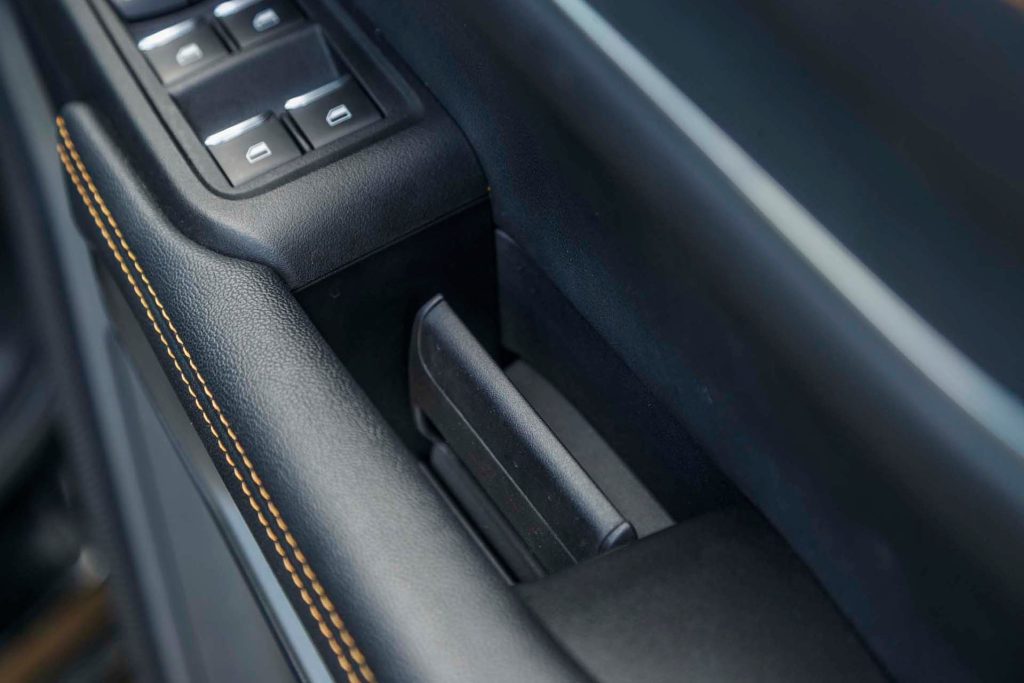
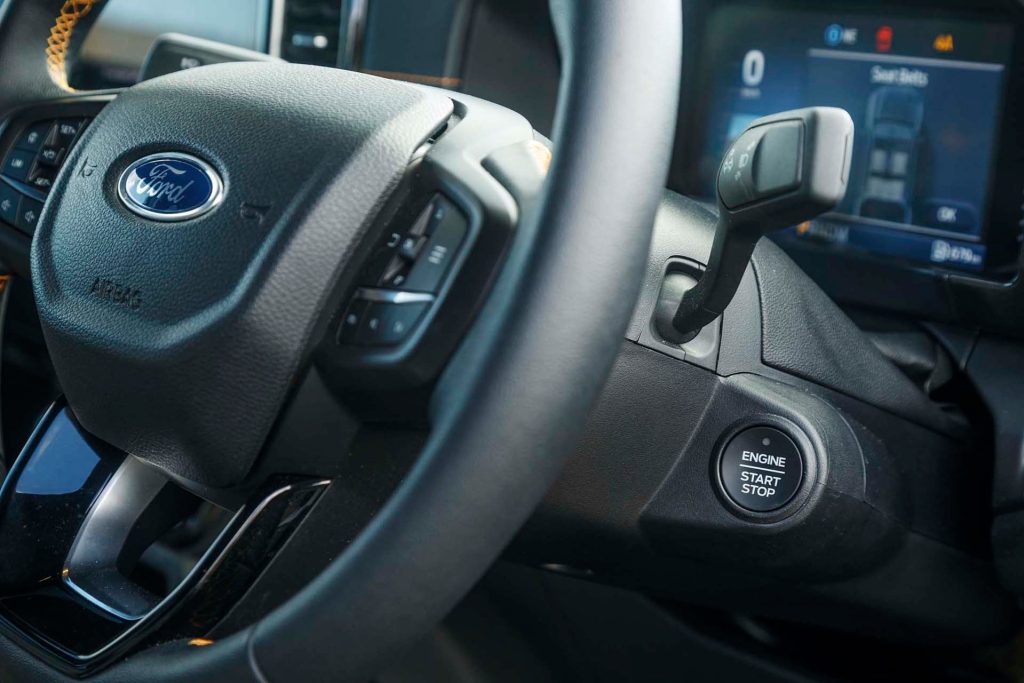
Raptor is a lofty $92,990 but as we have stated previously from our first full test, the premium seems cheap given the extras Ford has lobbed at this race truck. It too has a 3.0-litre V6 turbo, but burns gas to produce more power; 292kW along with 582Nm of torque, although that’s when it’s gobbling back 98 octane. Expect to pay an additional $5175 in fees on account of its 292g/km output (12.8L/100km).
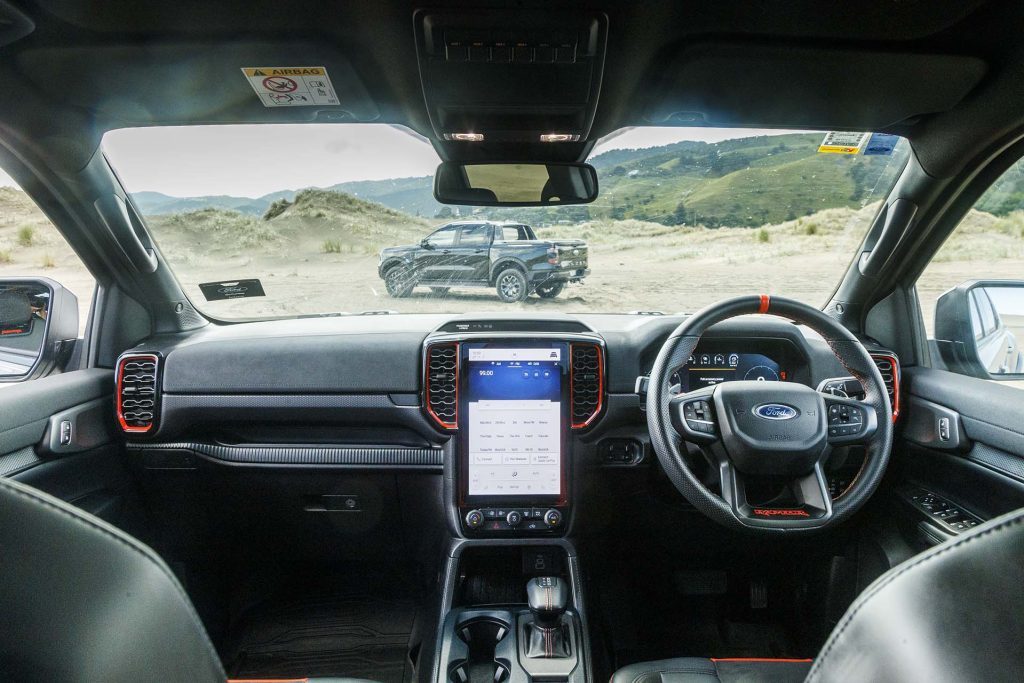
Raptor too has a ten-speed auto, and the same active AWD system. But there the similarities end, with Raptor sporting its own suspension set-up gaining wider tracks, beefed up front arms and a unique rear end with its coil springs, trailing arms and Watt’s link. The Fox shockers return, better than before with active damping characteristics.
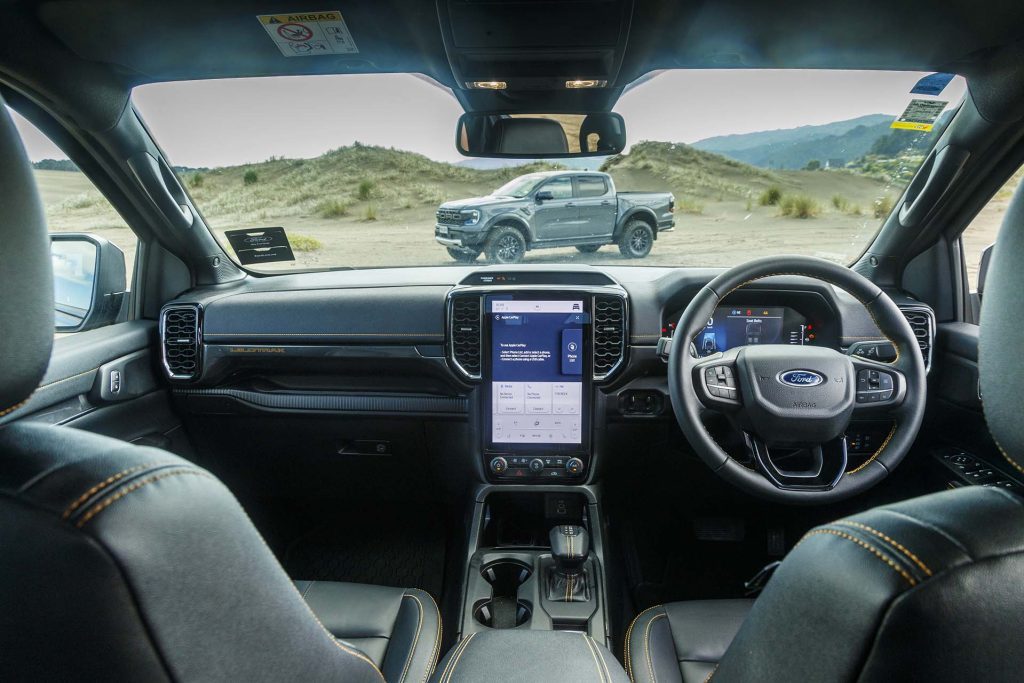
What are the differences between the Wildtrak and Raptor?
There are plenty. The engines are similar in size and both are boosted but are otherwise completely different beasts. The Wildtrak has the easy midrange surge of a big diesel but, being a long stroke oiler, runs out of puff before 4000rpm. The Raptor’s Ecoboost V6 takes a bit longer to brew up its torque but then it comes on strong. And just as the diesel is tailing off, the petrol V6 is hitting its power band, revving more quickly and for longer to just past 6000rpm. Raptor easily accounts for Wildtrak in a straight line, 0-100 in six seconds versus eight something. Yet the diesel is still a likeable lump, with a mix of brawn, refinement and relative economy. It can’t match the Raptor for sound however. The diesel is quiet, with a powerful rumble but the Raptor makes a unique raucous, rasping melody. While it’s music to the ears, the Ecoboost is a pain on the wallet. Where the Wildtrak V6 will average in the 9L/100km range, you’ll be lucky if the Raptor returns something in the mid-teens, while you can easily nudge the average into the 20s if you’re liberal with the throttle.
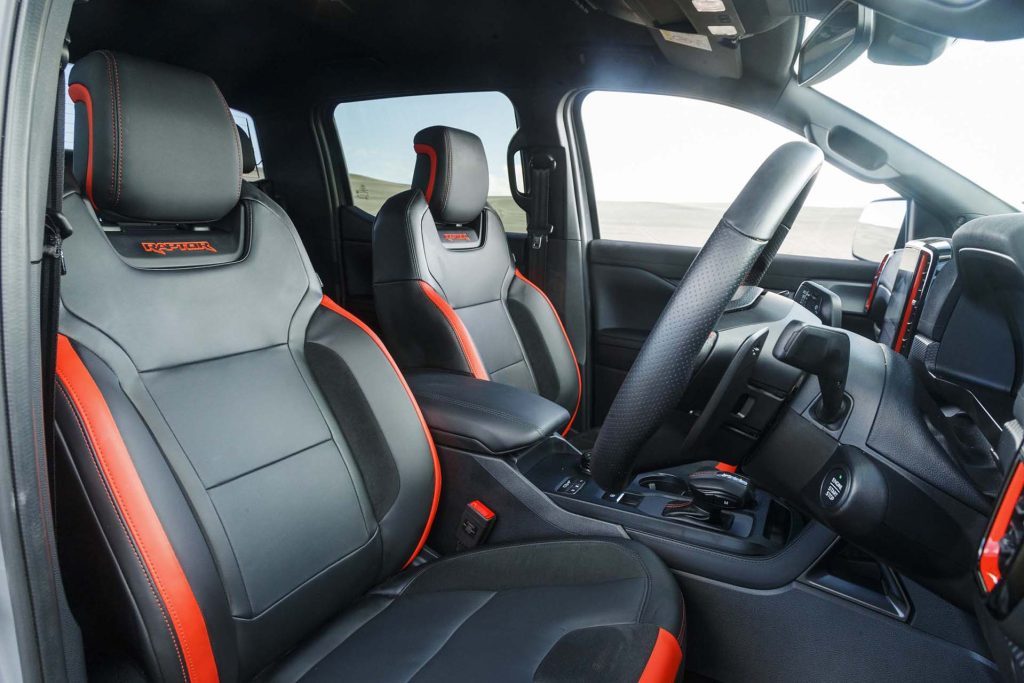
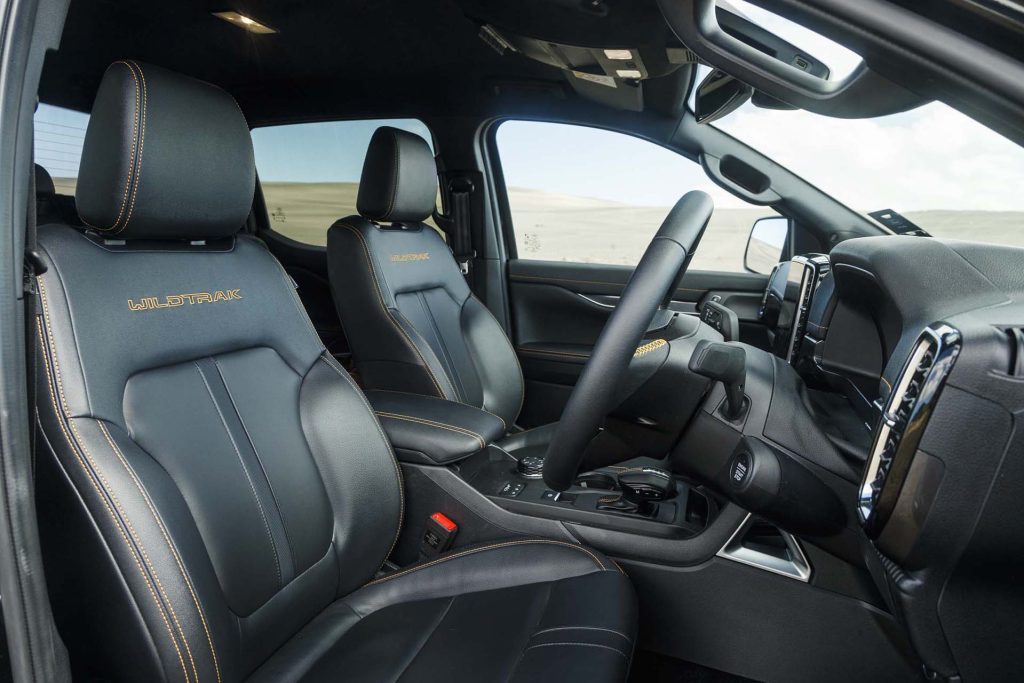
Is the Raptor better off-road than the Wildtrak?
The Ranger is a capable 4×4 with enough ground clearance and rear axle articulation to ease over most obstacles, while there’s a locking rear diff for the tricky bits. But that is just the starting point for Raptor. It has more ground clearance, better approach and departure angles, chunkier tyres and a front diff lock. When you crank up the pace off road, those long travel shockers with their special valving start to come into their own. Roaming around on the sand, the Raptor deals with the dips and bumps, maintaining a level ride and recovers its composure quickly when it hits the big ones. The Wildtrak can buck and pitch about as you up the pace, and there’s some diff hop when you’re getting silly. Both have the auto selecting setting for the on-demand AWD, the system deciding where to send the torque to balance economy with traction, along with the choice of RWD, 4 High and 4 Low. The Raptor adds further off-road drive modes including rock crawl and full lunacy Baja mode, complete with an anti lag setting for the turbos, keeping them spooled briefly if you should ever feel the need to lift off the gas.
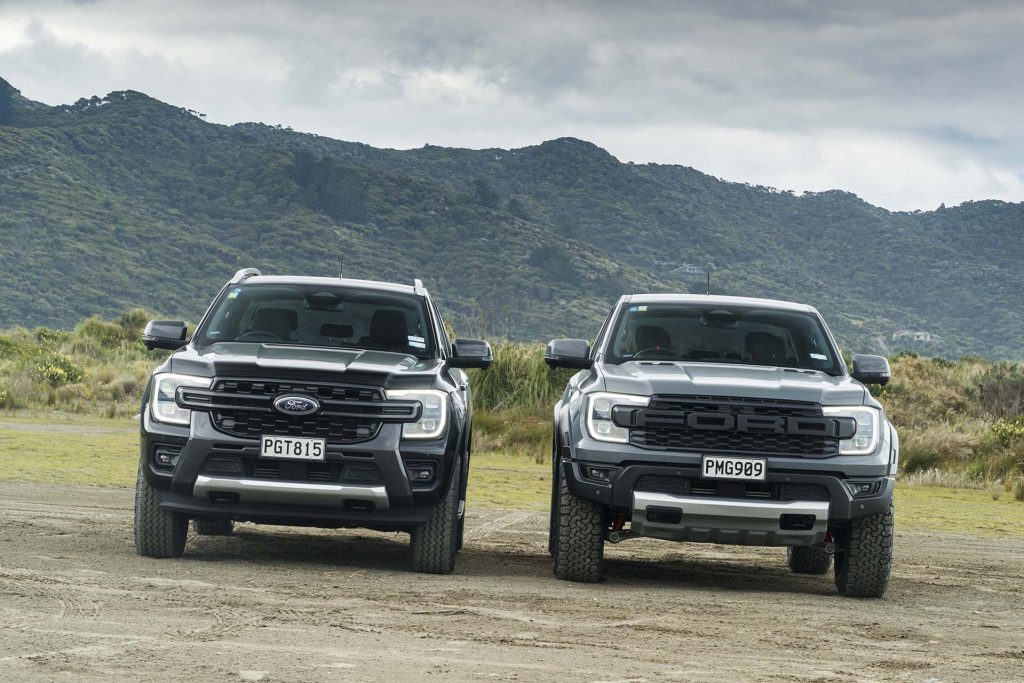
What about on the road? Does the Wildtrak beat the Raptor?
An immediate difference between them is the steering. There are three assistance settings for the Raptor, all meatier than the Wildtrak, which feels overly assisted by comparison. In isolation, the Ranger is a good steer for a ute; it turns in tidily with enough feel for the action while being rather refined. But get behind the wheel of the Raptor and you find it turns more immediately with a better connection to those turning wheels.
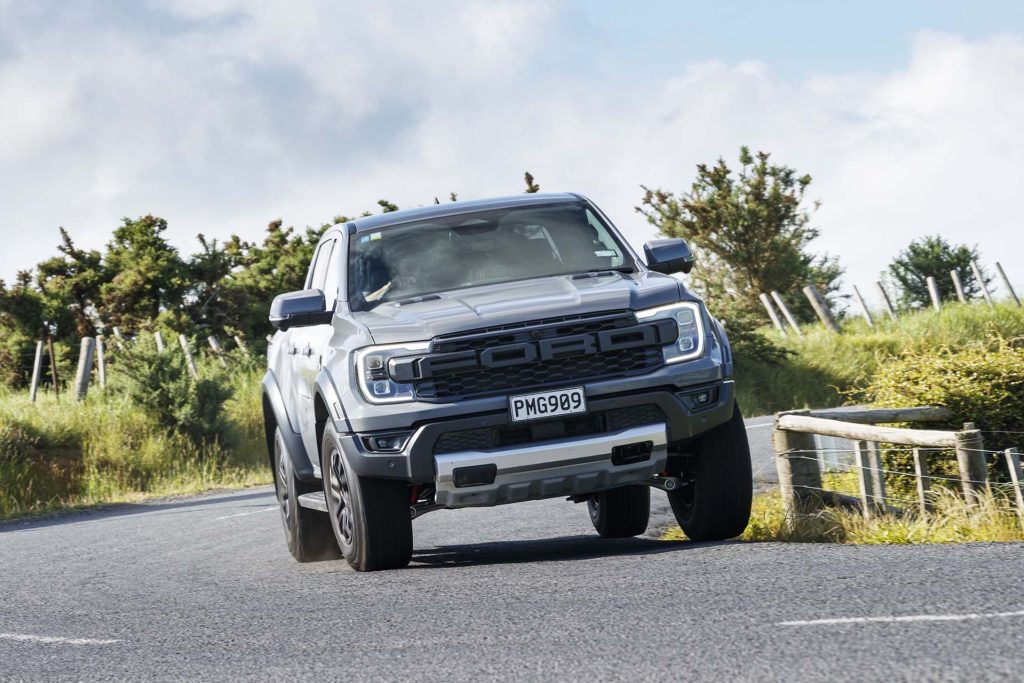
In the sharp corner we used for the photos, the Raptor wasn’t too much quicker through it, but it was more composed, and utterly unfazed by a large mid-corner rut carved out by the numerous trucks plying the road. In the Wildtrak, this road trauma triggered the ESP as the tail skipped sideways. The controlled and compliant rear end of the Raptor means there’s virtually no bump steer to contend with, tracking faithfully through every corner with little need for any mid-corner corrections.
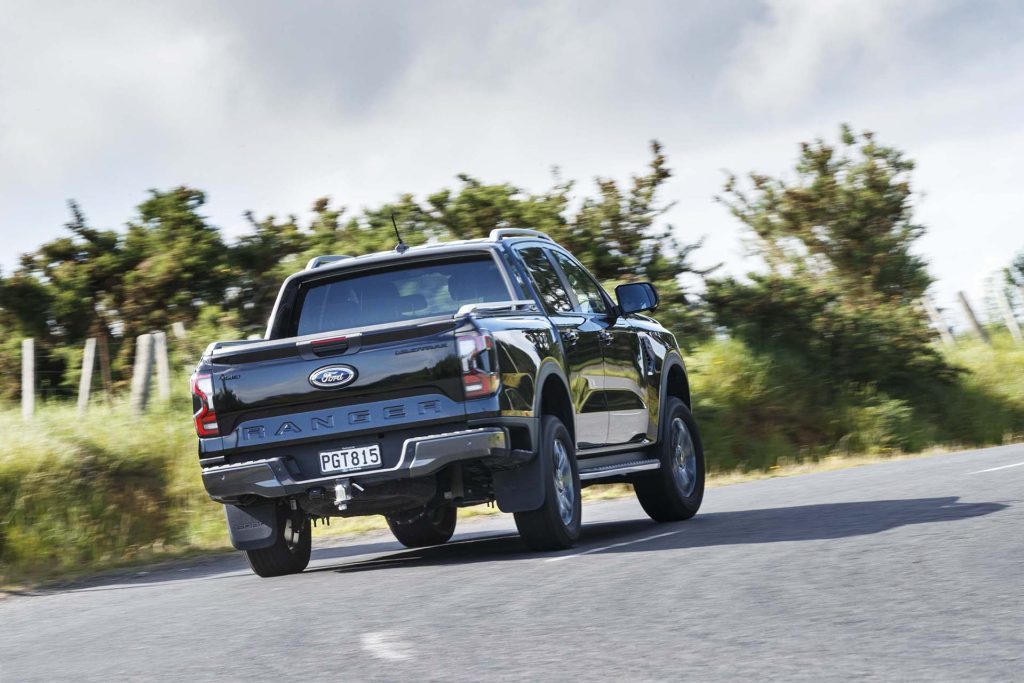
The Raptor’s trans is smarter, there’s a Sports mode to start with, where it holds gears when required, shifts up at the appropriate time and snaps a downshift when you order one. It’s a different box to the one used in Wildtrak because the latter is not a sports truck so doesn’t have the same shifting gumption. It does the business but just in a more relaxed manner. There’s no point in messing with the manual mode to stimulate the action as this is more of a towing tool, helping lock out taller gears when you’re hauling.
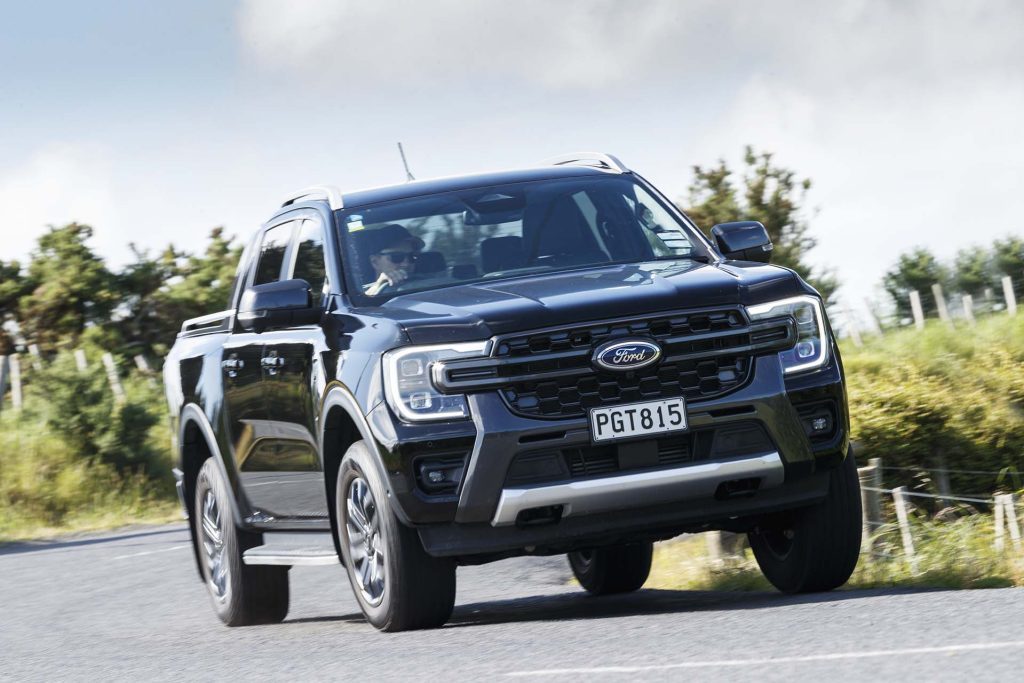
Yeah, but is the Raptor all a bit too much?
Like any performance-orientated machine these days, the Raptor is quite civilised when it’s not trying to jump dunes. But then the Wildtrak is just that bit easier going. The steering is lighter, the turning circle better (but still not that great either). It also has a few extra convenience features like a self-parking function that does the job entirely by itself (both the steering and the moving) and the electrically operated sliding tonneau cover as standard.
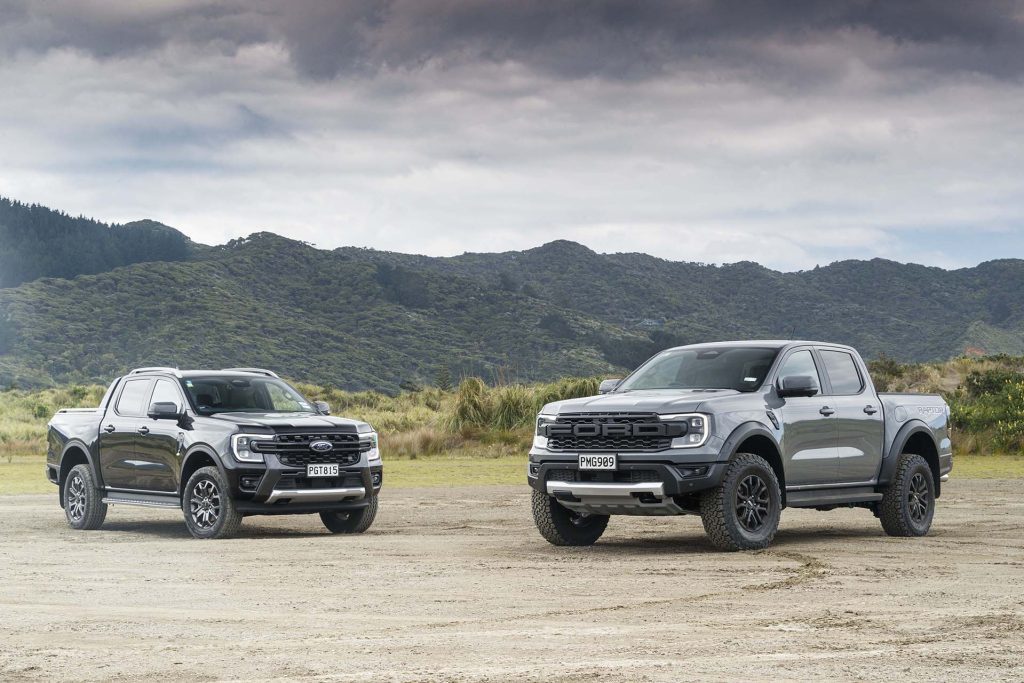
The ride quality in the Wildtrak feels thoroughly resolved for a ute, until you experience the Raptor, which has a higher level of compliance again and more control too. The rear simply doesn’t move about on the bumps. And it flies over speed humps.
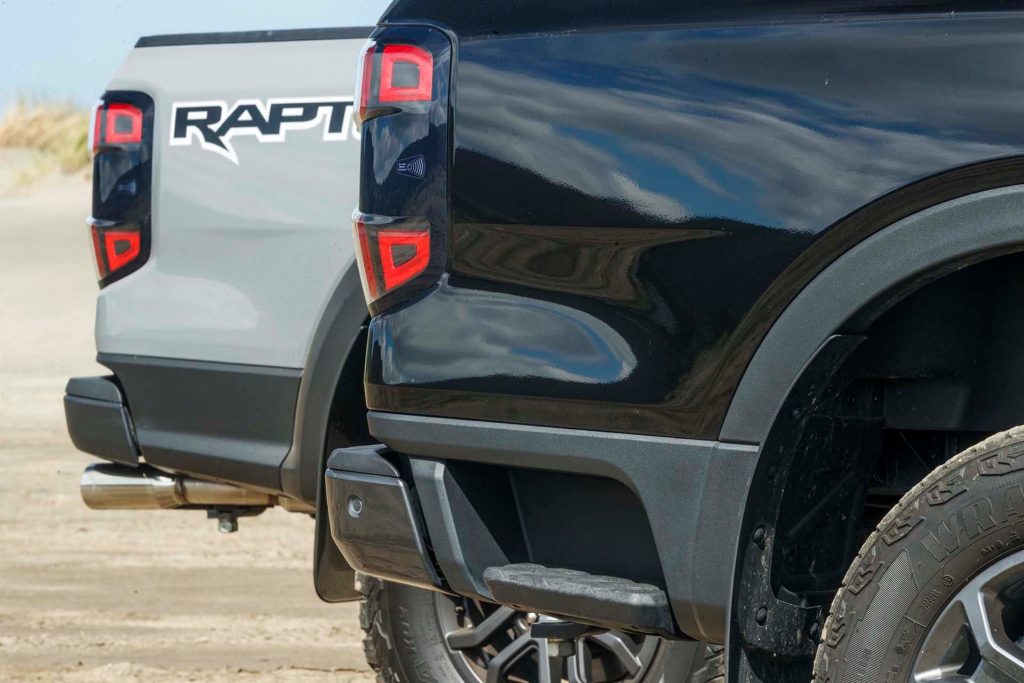
Inside they are similar with the same big screen infotainment system, smart key start, charge pads and the like. There is more soft padding around the cabin now, even on the door tops, and there are more drink holders.
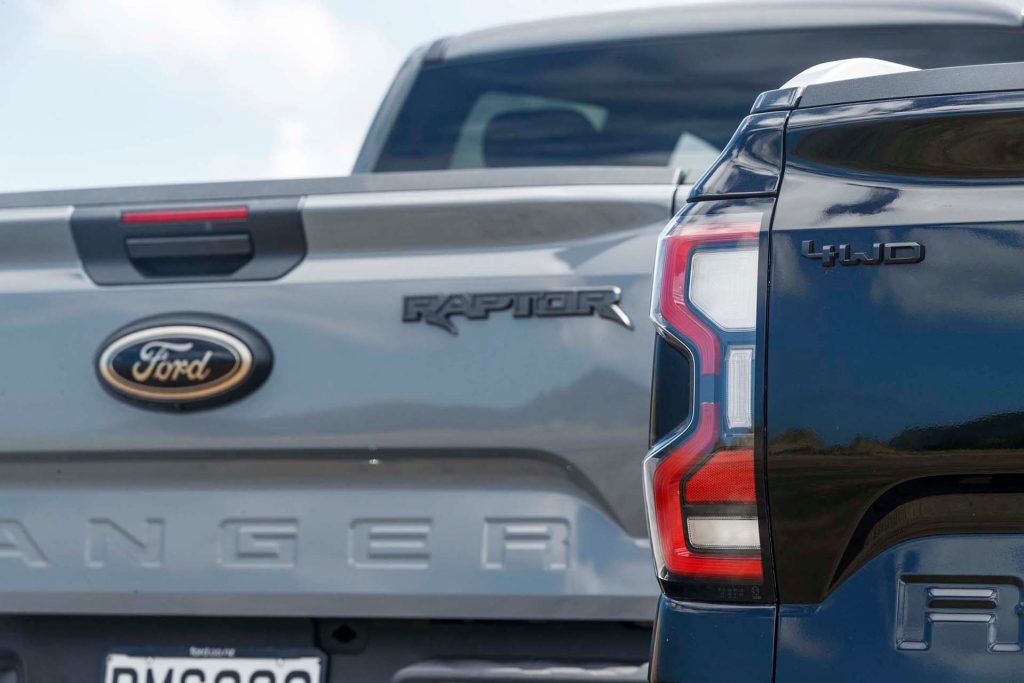
There is a difference in the trimmings too, the Raptor with pumped up seat bolstering and sports-themed highlights. Each is practical with good storage, including a place for your fries in front of the stubby shifter (which can make selecting R a bit tricky when you’re in a hurry). Items like Isofix points in the rear, lots of air bags (including one that pops up in the centre of the cab) and a stacked active safety list make them family friendly.
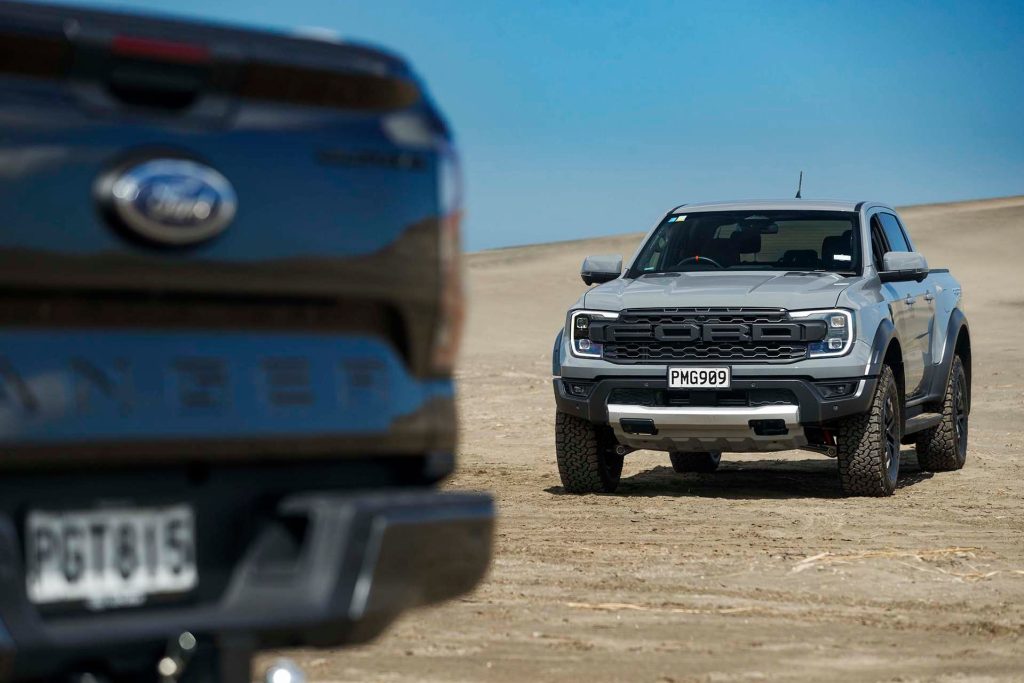
The Raptor’s added ground clearance is evident when you clamber aboard; it’s that much more of a stretch, especially if you run a short inseam measurement, and the off-road running boards have a rasp-like texturing that can be rough on bare shins. There’s no tray step on the Raptor – it fills with mud off road apparently – making it harder to retrieve your stuff. While the Raptor is wider overall, the tray has the same internal measurements, and fits a canopy if you are going to put it to work.
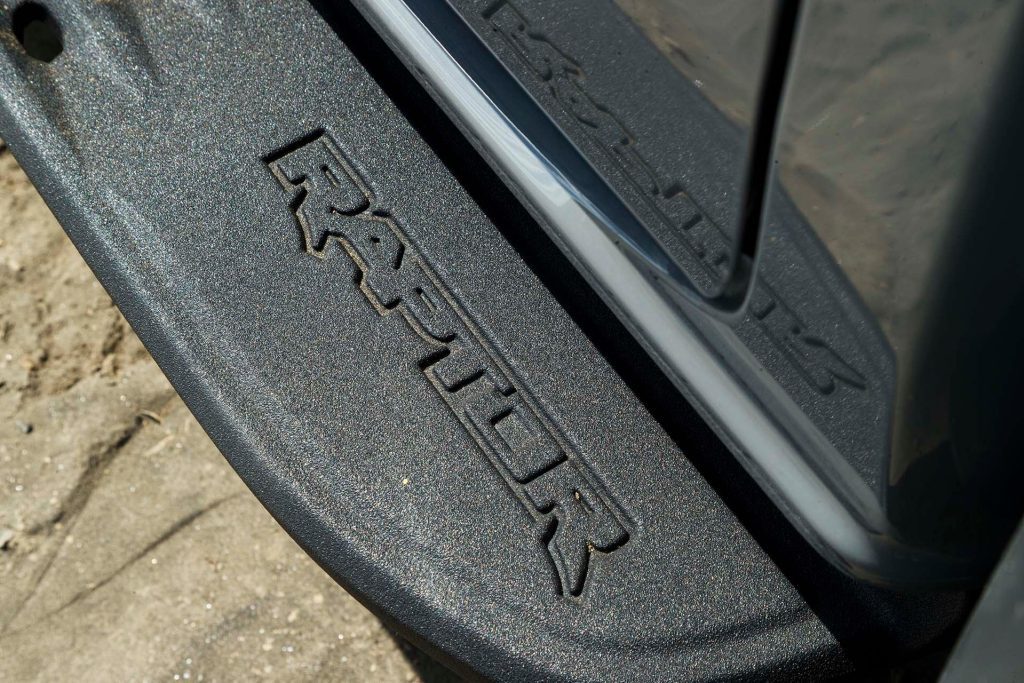

So which is it then? Wildtrak or Raptor?
The main difference between them is towing, which will likely have the biggest influence on your decision. The Wildtrak comes with the usual 3.5 tonne tow capacity while the Raptor’s is down at 2500kg. And the Wildtrak’s payload is superior at 997kg vs 655kg. Expect Ford to again offer some sort of FX4 variant in the future, one that adds some extra off road bits, including some Fox shocks and knobbly rubber while retaining maximum tow.
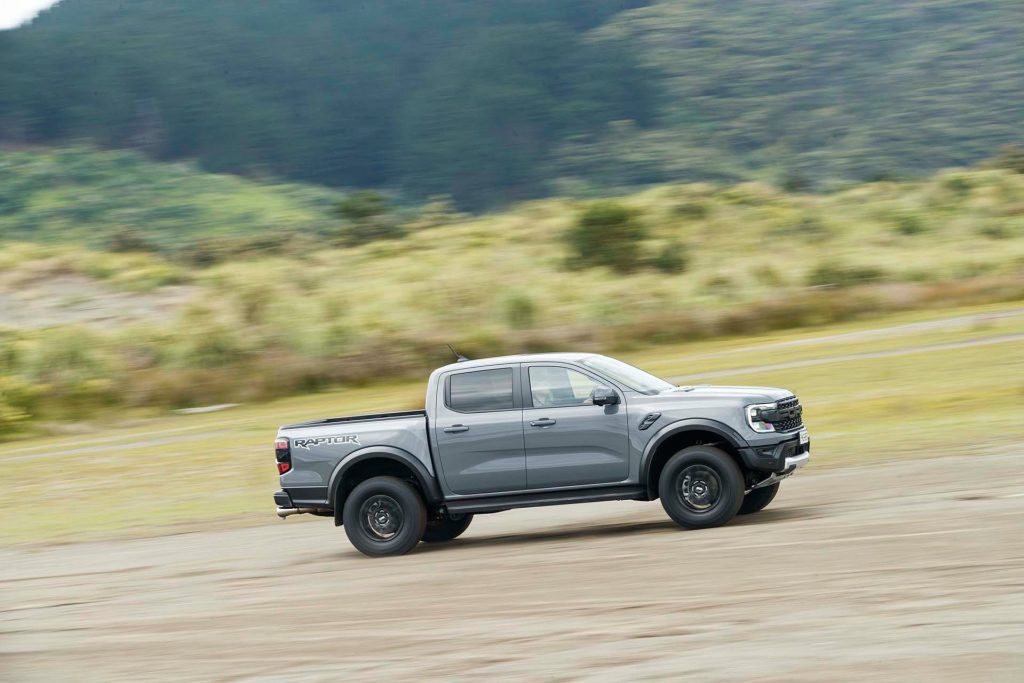
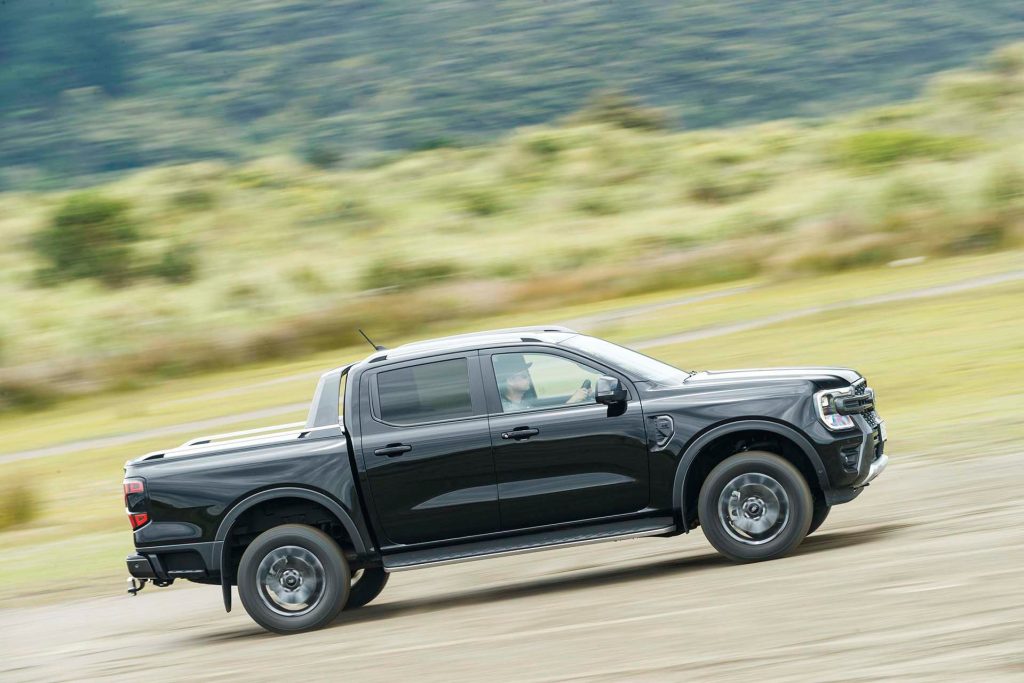
The Raptor is good, but is expensive with its extra initial purchase cost, the extra CO2 fees and the costs of running both in fuel use and servicing; we’d expect the intelligent oil monitoring light will pop up more regularly on the Raptor, especially if you do lots of short, round-town trips.
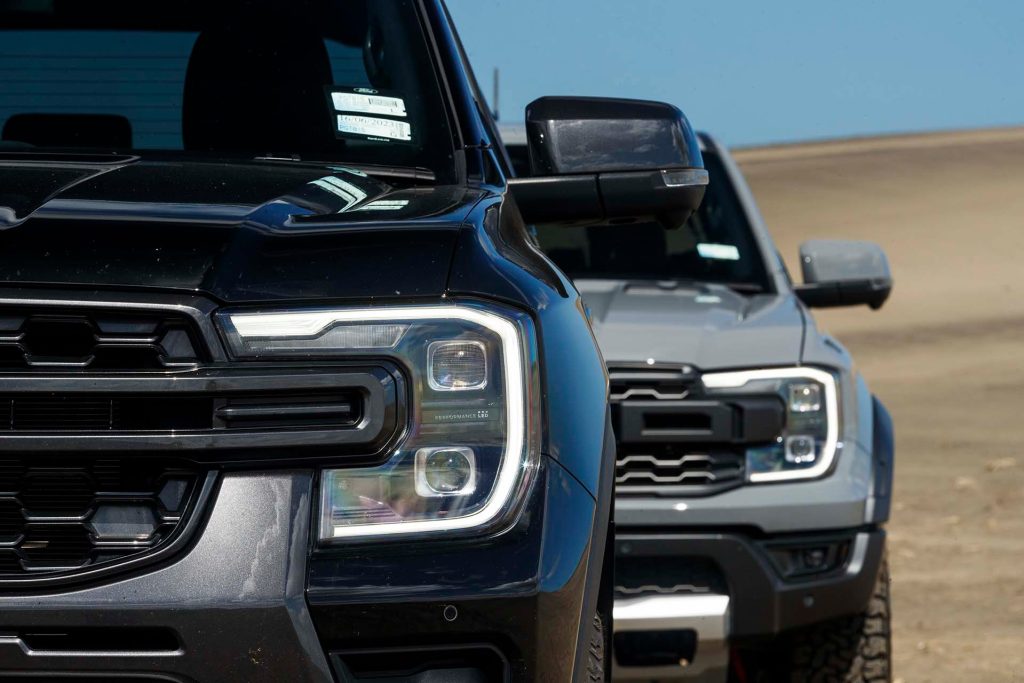
While astute Wildtrak buyers looking for reduced costs and emissions can opt for the bi-turbo version, for the Raptor the Ecoboost is the only option, at least for the time being. Don’t be surprised if Ford NZ quietly starts offering the detuned Euro-spec Raptor engine (212kW and 491Nm) if its average CO2 figure trends in the wrong direction in regards to the Clean Car Standard. Apparently there is a 2.0-litre diesel Raptor but it’s for Asian markets only. But presently, buyers don’t seem to care about the gas bills or the CO2 fees, with waiting lists growing by the week.
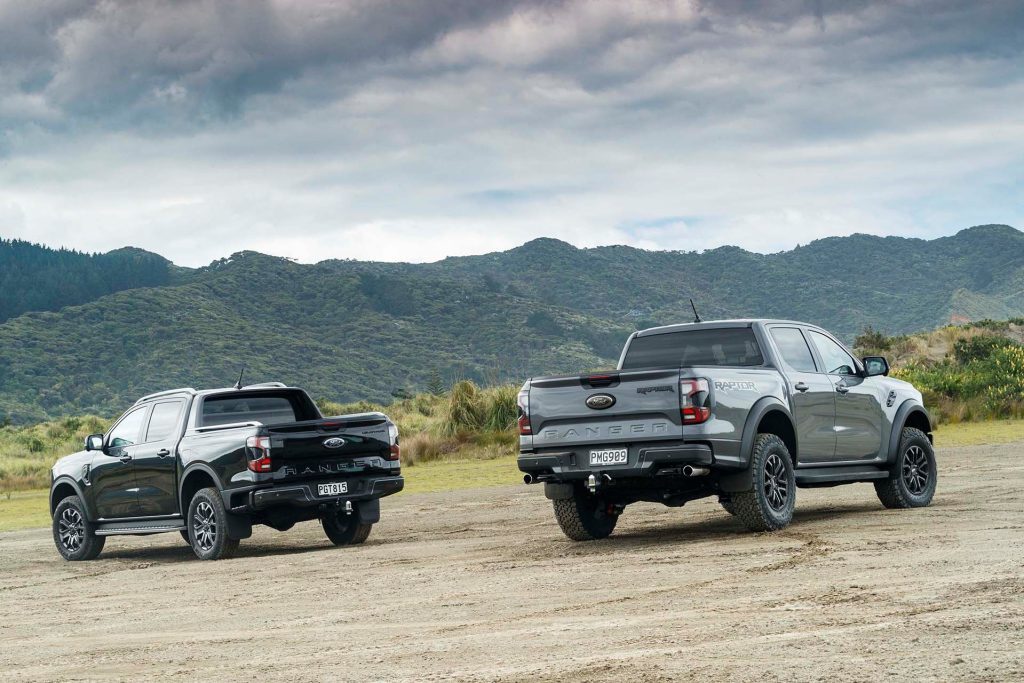
The Wildtrak V6 is more than enough truck for anyone, but the Raptor is one of those ‘just because I can’ type of vehicles. Getting the chance to really tap Raptor’s ultimate capability is the tricky part, especially at speed over rough terrain. Lucky if you have a farm or similar block of land to enable you to enjoy that $10k premium, as Ford has done a grand job on this desert racer for the showroom.
| Model | Ford Ranger Raptor |
| Price | $92,990 |
| Clean Car Discount | Fee + $5175 |
| Engine | 2956cc, V6, T, DI |
| Power/Torque | 292kW/583Nm |
| Drivetrain | 10-speed auto, on-demand AWD |
| Fuel Use | 12.8L/100km |
| C02 Output | 292g/km |
| 0-100km/h | 6.03sec |
| 80-120km/h | 3.90sec (110m) |
| 100-0km/h | 42.35m |
| Stability systems | ABS, ESP |
| Safety | AEB, ACC, BSM, LDW, RCTA, ALK, AHB |
| Tow rating | 750kg (2500kg braked) |
| Service intervals | variable |
| Warranty | 5 years/150,000km |
| ANCAP rating | not yet rated |
| Weight | 2475kg (claimed) |
| Model | Ford Ranger Wildtrak V6 |
| Price | $80,490 |
| Clean Car Discount | Fee +$3910 |
| Engine | 2993cc, V6, T, DI |
| Power/Torque | 184kW/600Nm |
| Drivetrain | 10-speed auto, on-demand AWD |
| Fuel Use | 9.3L/100km |
| C02 Output | 254g/km |
| 0-100km/h | 8.31sec |
| 80-120km/h | 6.08sec (167m) |
| 100-0km/h | 38.91m |
| Stability systems | ABS, ESP, |
| Safety | AEB, ACC, BSM, LDW, RCTA, ALK, AHB |
| Fuel Capacity | 80L |
| Tow rating | 750kg (3500kg braked) |
| Service intervals | Variable |
| Warranty | 5 years/150,000km |
| ANCAP rating | Not yet rated |
| Weight | 2399kg (claimed) |


